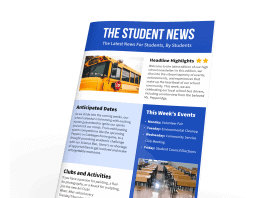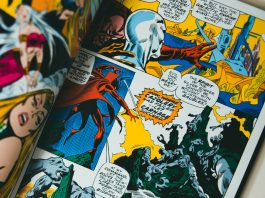
Last updated on November 1st, 2023 at 03:57 pm
Paper weight is an important consideration for every print project, as it has a significant impact on the look, feel, and quality of the printed piece. However, understanding the sizes and weights of paper can be confusing. One of the top questions asked by prospective printing customers is, “How do I choose the best paper weight for printing?” At Printivity, our customer service representatives frequently advise our customers on our suggestions based on their specific print job.
We have found that having a good paper weight guide can help customers understand why we recommend a certain weight and make the best decision for their project. Here’s what you need to know before selecting the paper weight for a print project.

Different types of printing paper
Today’s commercial printing industry offers many different paper types and weights to choose from. These can range from basic Bond and Book types to Index, Cover, Text, and more. Printivity offers Text and Cover paper types of varying weights. We use the following for the majority of our customers’ print projects:
- 50/60/70 lb. Text Uncoated
- 80/100 lb. Text Gloss/Matte
- 70/90 lb. Cover Uncoated
- 70/90/100 lb. Cover Gloss/Matte
- 14/16pt Cardstock Semi-gloss
How paper weight is determined
Every good paper weight guide will discuss the various methods for specifying different paper weights and thicknesses. We have found it helpful to our customers to focus on the two most common:
- U.S. Basis Weight. This is defined as “the weight of 500 sheets of paper in its basic unit uncut size.” The weight is determined before the paper is cut to its final size, such as Letter or Legal.
- Metric weight. This refers to the actual weight of one sheet of paper cut 1 x 1 meter square. Always weighing the same size sheet provides a more uniform scale to judge a paper’s weight and thickness. The most common metric used here is GSM, or grams per square meter.
For customers looking for a more straightforward method, Printivity recommends the following approach.
The Simple Paper Weight Guide: How to Choose Paper for Printing
Step 1: Choose the best paper weight according to the specifics of your print job.
Are you printing color copies or black and white copies? Are you printing booklets, brochures, or invitations? Or, are you printing business cards/postcards? This will narrow down your decision-making to the best paper weights and types of paper commonly used for your print project.
Step 2: Think about whether you want a cardstock paper weight, or a non-cardstock paper weight
If our paper weight guides don’t help you find the right paper, think about whether cardstock or non-cardstock paper is better suited to your type of print project.
Cardstock is also known as “cover,” “index,” or “bristol.” Non-cardstock papers are called “text” or ”bond.” At Printivity, our “cover paper” is synonymous with “cardstock,” and non-cardstock is synonymous with “text weight.” This keeps things simpler for our customers.
Printing customers often obsess about the numbered paper weights (i.e., 24lb/60lb/80lb), but I typically tell them not to worry about that detail. First, decide what kind of paper you want – Cover or Text – and then move on to the next step.
Step 3: Choose a paper coating—glossy (coated), matte (coated), or uncoated
Each paper finish name is self explanatory, however they also have unique qualities that come with it. Uncoated paper has a natural finish that allows for most, if not all, kinds of writing instruments to be written on it. Gloss paper has coating that not only gives off a high shine, but also heightens the printed colors. Like Gloss paper, Matte sheets have a smooth finish but has a duller appearance.
When ordering prints that require someone to write on it, we recommend Uncoated finished paper. However, if you want your project to have a coated finish even though there are places to write on it, you should order Matte finished paper.
Step 4: Choose your numbered paper weight (i.e., the “basis weight”)
Remember what I was saying about numbered paper weights earlier? Customers often wonder about the basis weights FIRST, when they should be thinking about it LAST. When they think about basis weights first, they get confused between the difference between “70 lb. glossy cover” and “70 lb. glossy text”. (The cover paper is a cardstock, and is much thicker.)
But if you already know you want a “glossy cover,” and you only have to choose between two options, the decision of what to order becomes much easier. Do you want the thicker cover paper (100 lb. glossy cover) or the thinner cover paper (70 lb. glossy cover)?
Final thoughts for choosing the best paper weight for printing
Don’t allow yourself to get caught up in focusing on the numbered paper weights (the basis weights). Instead, focus on the kind of paper you want, and then choose the paper weights relatively. For example, if you know that 80 lb. glossy cover is the thinnest paper, and you want a thicker paper, then choose the thicker one!
We hope our paper weight guide has made this topic easier to understand! Remember, our customer service representatives are here to help. If you have any questions about the right paper size, type, or weight for your print job, we’ll be happy to assist you in making the right choice. Contact us at 1-877-649-5463 or service@Printivity.com and we can send you a free paper sample kit.






